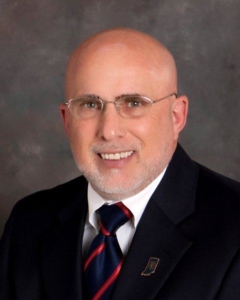When discussing the future of industrial hemp with Jamie Campbell Petty, Executive Director of the Midwest Hemp Council (MHC), it is hard not to get excited. Petty has become one of the Midwest’s most dedicated advocates to remove the barriers for farmers to grow industrial hemp, sinking her time and personal resources to establish the work she champions.
In 2010, this ex-military spouse returned to her Indiana roots, and began to build out her dream of a 20-acre hobby farm, that she and her husband, Guy, now share with family and friends. In 2013, Guy’s son, Justin, and his team at Recreator, began educating Jamie about hemp as a renewable and sustainable crop option. The hemp industry piqued her interest, and the rest has been a wild ride.
In her early advocating days, Jamie and her fellow volunteers began working with Purdue University’s Dr. Ron Turco and the Office of the Indiana State Chemist. The OISC is the regulatory body for the Indiana Hemp Program. Jamie soon met NIHC board member Bob White, Indiana Farm Bureau’s Director of National Government Relations. White, and then-INFB Policy Director Kyle Cline, took the time to work with Jamie as they all gathered information regarding the 2014 Farm Bill language and adopting INFB/AFBF policy language.
These connections began the thoughtful formation of the MHC when Petty and fellow co-founders Justin Swanson and Alan Kimbell saw the need to correct so many misconceptions about hemp fiber and cannabinoids from agricultural and regulatory agencies in her region, while working to improve the regulatory environment. Clear and consistent communication, as well as collaboration, were key to Midwest Hemp Council’s mission.
While the MHC embraces the potential of the whole hemp plant, which includes cannabinoids, grain and fiber, Petty believes the future for farmers to profit from the versatile crop lies on the industrial side, which is where she focuses most of her personal efforts.
“In the early days, it was so hard,” says Petty. “There were so many misconceptions. The Farm Bureau was not understanding the crop, so they were not publicly working on the issue, yet were instrumental in changing not only INFB’s policy, but that of the AFBF. The Indiana Department of Agriculture does not regulate, so they were not giving it attention. But, we were able to partner with Purdue University’s College of Agriculture to begin the work. Because of them and the Office of Indiana State Chemist, who regulates our agricultural laws, we were able to get the industry moving forward.”
With the help of dedicated volunteers, in early 2014, INHIA launched, just on the heels of Kentucky and Tennessee launching their chapters. Realizing they needed a broader platform to address inconsistent regulations across state lines, and the need for collaboration in building out the supply chain, they built the MHC and transitioned efforts into that organization with a focus on Indiana, dissolving the HIA chapter. “We originally remained very autonomous. We are a conservative state and cannot keep up with Tennessee and Kentucky, who are quicker to act. While we really desired regional collaboration, in the early days every state was working at their own pace.”
Today, the Midwest Hemp Council is a thriving organization with a clear mission to stand as a credible information center, a trusted policy advocate, and a dedicated forum for the hemp industry in Indiana and beyond. Their members come from every sector of the industry, promoting and building the whole hemp plant economy from seed to shelf. Justin Swanson, MHC President, has worked tirelessly alongside Petty to build a quality board and esteemed organization.
Recently, one of Petty’s only early supporters at the Indiana State Department of Agriculture, David King, has come along Midwest Hemp Council as a Strategic Partner and active contributor to the Board of Directors. King is now the principal of Hemp Products Store Brand Builders, with the focus on normalizing and streamlining the hemp product supply chain.
While based in Indiana, Petty believes the industry will not move forward without more collaboration between states and at the national level. “I team with other organizations in 23 states. There are many organizations, maybe too many, yet each brings something to the table. Industry consolidation of some of these will occur naturally, most likely, as the niche expands. Our current frustrations are with regulatory bodies, some do too much and FDA won’t act at all, which is why I believe collaboration is the key. We must be working together to achieve common goals.”
“We are a nascent industry,” emphasizes Petty. “We need clear and united objectives. Too many cooks in kitchen isn’t effective.”
MHC has accomplished much but suffered setbacks with COVID-19 and the fact that in the middle of growing season in 2019, Indiana criminalized the hemp flower when farmers had plants already in ground. Now, Indiana farmers have surplus CBD processed and sitting on shelves. Also in 2019, Hoosier farmers grew fiber under contracts which were later breached; however, since that time Marty Mahan of Heartland Hemp Coop, Petty and others have moved 90% of that hemp into the market, such that farmers did receive payment. 2019 was a year of “Life Lessons” across the U.S. for those involved in hemp.
Working to regroup, Petty says, “Right now, we are focused on positioning for the future, creating infrastructure and building solid contracts, primarily within industrial hemp. I, and others, envision at least one major grain and fiber hub within the state, that can service farmers in nearby states, with smaller, regional footprints across Indiana and the Midwest. I believe in the cannabinoid industry, but research and investment needs to go towards grain and fiber NOW – the cannabinoid industry has the infrastructure and market space.”
Being a part of the National Industrial Hemp Council (NIHC) is important to MHC, especially through their relationship with NIHC board member Bob White, who has become a great resource. “NIHC supports important initiatives on the national level,” Petty says. “Their focus is important and we believe it is worthwhile to collaborate with them on a larger scale.”
When asked where she sees the industry in five years, she says, “Five years is a good number. In five years, we hope to have significant supply chain remedies and infrastructure in place. It is currently a “chicken and egg” situation. People who want to invest need contracts. People who want contracts need infrastructure. We need brand builders. We need programs to normalize cannabinoids with the consumer and build grain and fiber opportunities, working through collaboration with retailers. I am proud to say that Midwest Hemp Council is working daily to find solutions to the supply chain.”
Once the industry begins to fill the holes in the supply chain, things will begin to function smoothly.
“When people express doubt, I refer them back to the soybean industry. I have elderly farmer friends who tell me that as children they had bales of soybean rotting in their barns. The market wasn’t developed. Now their grandchildren are farming and significantly profiting from corn and soybean. We may not have as large of market as the soybean industry for our farmers, but we have a much more diverse opportunity in resources and applications for hemp than any other crop.”










 “We have developed a comprehensive plan based on NIHC vision and mission to promote U.S. worldwide,” explains Kevin Latner, NIHC’s Senior Vice President of Trade and Marketing. “Policy initiatives, trade facilitation, supply chain development and market development will provide the framework for U.S. export success.”
“We have developed a comprehensive plan based on NIHC vision and mission to promote U.S. worldwide,” explains Kevin Latner, NIHC’s Senior Vice President of Trade and Marketing. “Policy initiatives, trade facilitation, supply chain development and market development will provide the framework for U.S. export success.”
 As in most farm bureaus, at the Indiana Farm Bureau (INFB), they have a vision to keep agriculture in Indiana strong and vibrant, to provide quality food to Indiana residents and to protect the rural life they love. They are the largest grassroots farm organization in the state with more than 250,000 members, and offices in all 92 counties. Started in 1919, INFB is well-positioned as the Voice of Indiana Farmers, and well-equipped to assist the farmer to leverage industrial hemp.
As in most farm bureaus, at the Indiana Farm Bureau (INFB), they have a vision to keep agriculture in Indiana strong and vibrant, to provide quality food to Indiana residents and to protect the rural life they love. They are the largest grassroots farm organization in the state with more than 250,000 members, and offices in all 92 counties. Started in 1919, INFB is well-positioned as the Voice of Indiana Farmers, and well-equipped to assist the farmer to leverage industrial hemp.





